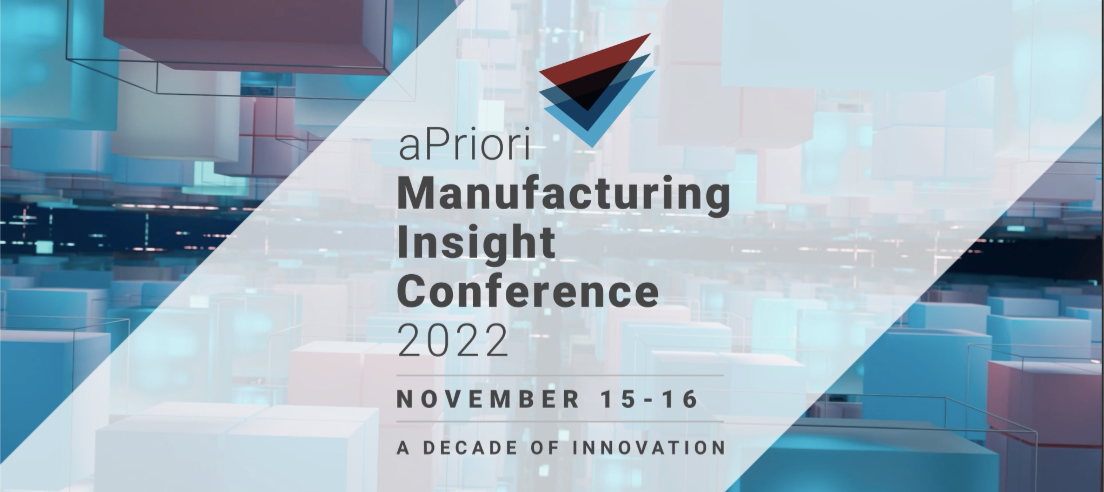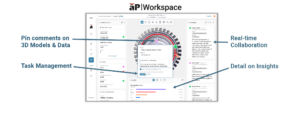It certainly has been an interesting two years. A worldwide pandemic. An ongoing war in Ukraine. Rising fuel prices. Increasing inflation and unprecedented interest rate hikes. Supply chain disruptions and raw material scarcities. Continuing labor shortages. Accelerating climate change.
The world has become more complex. The pressures on businesses are even greater.
Despite a less-than-optimistic outlook, there are silver linings. The world has banded together in solidarity for Ukraine. Governments worldwide are prioritizing sustainability initiatives and incentives to slow climate change. Vaccines have been created to stem the severity and spread of Covid. Businesses are proving highly resourceful and innovative in working around them including manufacturing challenges.
Rising to meet manufacturing challenges isn’t a pipe dream. It can be a reality and is for many manufacturing companies today. It’s what we focused on at our 2022 Manufacturing Insights Conference, “Making Profitability & Sustainability a Reality”. If you didn’t have an opportunity to attend, continue reading to learn what we covered (and look for future communications to sign up for next year’s conference). If you did attend, enjoy this refresher on five key takeaways. We hope it proves inspiring for you.
Inflation and Margin Pressures
These pressures are real and persist. At the current churn rate, Fortune 500 predicts, that half of all of today’s S&P 500 firms will be replaced over the next 10 years. To avoid becoming a statistic and remain competitive, it is critical to increase legacy product margins and continue to create products that generate new revenue growth. Here’s how:
- Explore design/cost tradeoffs continuously
- Optimize design for manufacturability
- Engage sourcing and procurement teams earlier in the process
- Anticipate risk by standardizing the design to cost process
According to Gartner, just 9% of organizations create enough capacity to take on the growth and innovation opportunities they pursue. By making the four bullets above standard practice, manufacturers can reduce cost drainers without compromising product quality. As a result, they will have the resources for higher-impact innovations and will mitigate delays, enabling them to get to market faster.
Supply Chain Woes
Time is money. Nowhere is that more evident than in the supply chain. For many manufacturers, the pain has been real over the last two years. According to McKinsey, even a short disruption of 30 days or less can jeopardize the EBIDA margin by 3-5%. Consequently, manufacturers have had a supply chain reckoning. A resilient, efficient supply chain is essential to mitigate current and future disruptions. We recommend this approach:
- Balance service vs. cost
- Streamline complex processes to improve efficiencies and productivity
- Analyze suppliers and sourcing strategies quickly, pinpointing those who can ensure supply chain continuity
- Build better supplier relationships and supply chain partners
The above is achievable with a digital twin that can highlight the most critical parts of the supply chain. It also should enable you to create “what if” scenarios that can be tested to further bolster supply chain resilience. Strengthen supply chain management via increased data sharing with suppliers as well as possibly “ringfencing” a part of the supply chain to ensure availability.
The power of a resilient supply chain can be seen in our customer, Alstom. By implementing the above actions, Alstom was able to eliminate RFQ processing delays. Even better, they’ve been able to save 40% of their recurring costs.
Labor Shortages and Skills Gaps
They are your most important asset: your employees. However, the last few years have seen a tremendous shortage of qualified workers, many of whom have reached retirement. According to Forbes and Tech-Clarity, 65% of surveyed manufacturers indicate that students have not been adequately prepared to create manufacturable designs. How can manufacturers help close these skills gaps and shortages?
- Adopt Design for Manufacturability (DFM) and Design to Cost (DTC) practices
- Leverage skilled labor to train and mentor talent, accelerating product development and building up skills
- Employ automated design analysis processes, allowing manufacturers to scale manufacturability and reduce cost more efficiently and accurately
- Foster greater communication and collaboration across the organization and product lifecycle, increasing data sharing and accessibility via cloud architectures
Digital manufacturing solutions such as aPriori support the above initiatives. aP Generate’s automated analysis results in faster ROI. For instance, when parts are checked into the PLM, cost and manufacturability can be analyzed and insights unlocked for improvements and reductions. Workflows and project management are enhanced, highlighting the most important cost drivers and parts with the most critical DFM and DTC issues transparently.
What’s more, the right information gets to the right people at the right time. As a result, less skilled workers can learn faster, freeing up more seasoned staff to focus on more complex or technical issues. Deloitte underscores the necessity of more collaborative tools, with approximately 67% of U.S. manufacturers expecting cloud collaboration to have a positive impact on personal productivity. It also improves retention.
It’s why we developed aP Workspace and introduced it at our conference. It breaks down siloes and ensures that all players in the product lifecycle – from design engineers and cost experts to sourcing and executive teams – can work more effectively, share data quickly and accurately, and optimize costs, product design, and manufacturability. It creates a digital thread between insight creation and real-time collaboration tools. Test drive it with a demo.
Sustainability Push and Implementation
It’s everywhere and appears to be an insurmountable task: moving to a sustainable practice. What’s more, it is no longer enough to intend to become sustainable. Customers and governments are demanding actual sustainable impact. Bain & Company revealed that just 12% of all corporate change efforts fully succeed. From a sustainability initiative standpoint, the statistics are more disheartening with just 4% succeeding.
Despite obstacles, it is imperative that manufacturers become sustainable. The World Economic Forum noted that 54% of the world’s energy consumption and 20% of its global emissions come from the manufacturing industry. Although many organizations are defining sustainability strategies, just 40% believe they have the knowledge and capabilities to achieve them.
Our conference theme underscored that sustainability and profitability are possible:
- aPriori’s digital factories enable manufacturers to efficiently measure, reduce, and report their products’ manufacturing CO2 footprints
- We are continuing to develop and deliver sustainable solutions that allow manufacturers to not only calculate their CO2e but its cost at the same time
- Our solutions help manufacturers streamline and enhance the product design and development process for better manufacturability, impactful sustainability, and greater cost savings
Make sure you regularly check our website. Follow us on LinkedIn. Subscribe to our blogs and listen to our podcasts. We have several other exciting product developments and releases in early 2023 that will further enhance your ability to implement a sustainable practice.
aPriori Developments
We practice what we preach. We continuously innovate new technologies that enable the manufacturing sector to perform more efficiently, cost-effectively, competitively, and innovatively. We have expanded the power of our digital manufacturing insights platform by:
- Improving its cost optimization so you get more insights into should costs and make vs. buy as well as design to cost and material costs/selections (P.S.-keep an eye out for more developments in this area in 2023)
- Optimizing and developing new manufacturing process models. Not only did we make significant enhancements to current products like assembly and welding cost models but also introduced new ones such as roll forming costs models and machining cost/sustainability/DFM processes.
- Substantiating the effectiveness of our solutions. Recently, Forrester recognized our achievements in this area, noting over the first three years of a customer’s deployment of our solution they gain: 603% ROI in less than 6 months as well as $19.7 million in net present value (NPV)
Want to learn more about how our solutions can help you? Sign up for one of our webinars. Receive some training. Discover aPriori’s continuing developments and impact on digital manufacturing solutions. Explore our case studies to understand the real-life impact of our solutions.
The Best Is Yet to Come
If there is one thing that we hope our attendees took from this conference, it is the following. We are grappling with many urgent issues worldwide as well as within our organizations. There is tremendous pressure on each wheel of the cog to ensure that they function efficiently and impactfully.
It can be overwhelming. However, as human beings, we are at our best when things are often at their worst. We band together to weather the storms and make a positive impact that ripples out. We are at the crossroads where we can continue on the path of progress for a better world or remain complacent. We are choosing the former and believe in possibilities. Join us in that mission. The best is yet to come for you, your business, and the world.
Nip #MIC22 FOMO In The Bud
We’re an inclusive bunch. Vicariously zip through our conference.








